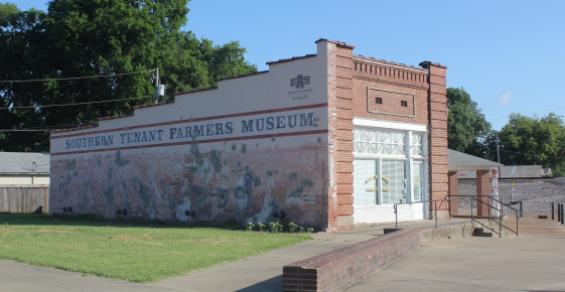Historical sites in the heart of the Delta share unique perspectives on farm life from the past century.
One perk of working as a writer for Delta Farm Press is running across unexpected stories. That happened to me this summer when I met Penny Toombs at an Arkansas field day.
Toombs is the director of two Arkansas State University Heritage Sites — the Historic Dyess Colony: Johnny Cash Boyhood Home and the Southern Tenant Farmers Museum. The sites she manages provide two different perspectives of farm life in the Delta during the years following the Great Depression. One features a world-renowned music legend at its center. The other, mostly unknown tenant farmers and sharecroppers. Both stories are fascinating and important.
“Both sites connect us to a specific time in our region’s history and cover events that have influenced not only farming, but the culture of the Delta,” Toombs said. “The stories they tell are nearly 100 years old now but still very relevant.”
If you’re like me, you’re probably very familiar with Johnny Cash’s music, but maybe less familiar with the New Deal programs that shaped his childhood and the lives of 500 other Arkansas farm families. And I was completely unaware of the significant role a tiny Arkansas town played in the farm labor movement. But these are stories that impacted our region and influenced our nation. I’m glad I know them now.
Southern Tenant Farmers Museum
The Southern Tenant Farmers Museum is located in Tyronza, Ark., and tells the story of tenant farming and sharecropping in the early 20th century. The museum, which opened in 2006, includes a variety of exhibits, some interactive, that bring this time period to life.
The museum also covers the effects of the Agricultural Adjustment Act, a government policy that encouraged farmers to grow less food to improve depressed prices. In return, landowners received government subsidies, a portion of which they were supposed to pass on to their tenants. Some did, but most did not, and tenant unemployment and evictions rose steadily.
The Southern Tenant Farmers Union was formed in July of 1934 in response to the policies of AAA. The museum is housed at the organization’s original headquarters. The union’s efforts to advocate for tenant farmers are also explored in museum exhibits.
“This new union was unique for its time because it was fully integrated when the South was segregated. It was the first union to allow for both black and white members, and it had both male and female leaders working together to protect agricultural workers,” said Toombs.
“The organization eventually grew to 40,000 members in six states. It’s amazing to think it all started right here where we are standing. It’s definitely a story we want to celebrate and preserve for generations to come.”
Recent renovations include the addition of an interactive timeline that tells the history of the Mississippi Delta starting in the year 1500, recordings of first-hand accounts from former sharecroppers and union members, artist renditions of period farm tools, and a front fa?ade of a tenant house.
Dyess Colony
Dyess Colony was a resettlement colony for poor farmers during the Great Depression. Out of thousands of applicants, 500 farm families were selected to come to Dyess, help clear the swampland, and set up farms on 20-40 acres of land, each. Resettlement colonies were part of another federal program created in response to the economic crisis of the 1930s, although the colonies had more positive implications than AAA — at least for the families selected to occupy them.
In 1935, a three-year old Johnny Cash and his family moved to Dyess. By the age of five he was picking cotton and singing along with his family as they worked. His experiences living and working on this small farm greatly influenced his later musical career and served as inspiration for songs like “Pickin’ Time” and “Five Feet High and Rising.”
Visitors can learn about the colony and enjoy a guided tour of Cash’s boyhood home. For music lovers, there is plenty about the “Man in Black,” but the heritage site explores the “social experiment” of a resettlement colony, as well as the hardships of farm life before mechanization and advanced technology.
Worth the visit
It’s pretty incredible that these two significant pieces of American history are right here in the Delta, and just a stone’s throw from each other. Both sites could easily be toured in one day. For those interested in history, agriculture, music, or Delta life, it’s worth the visit.
For more information on the sites, visit arkansasheritagesites.astate.edu.





